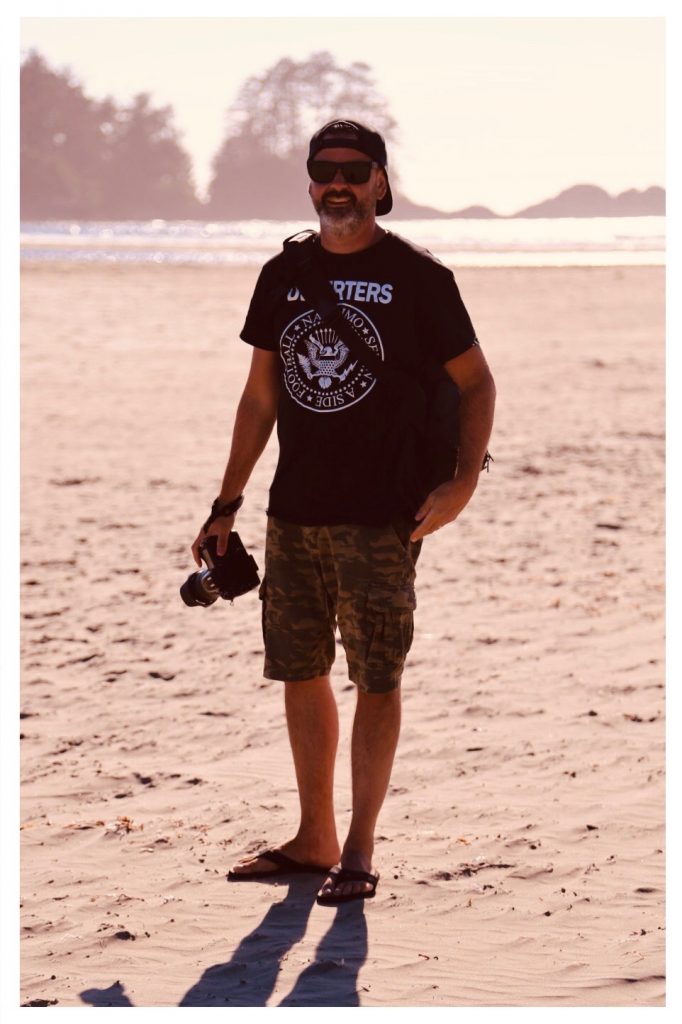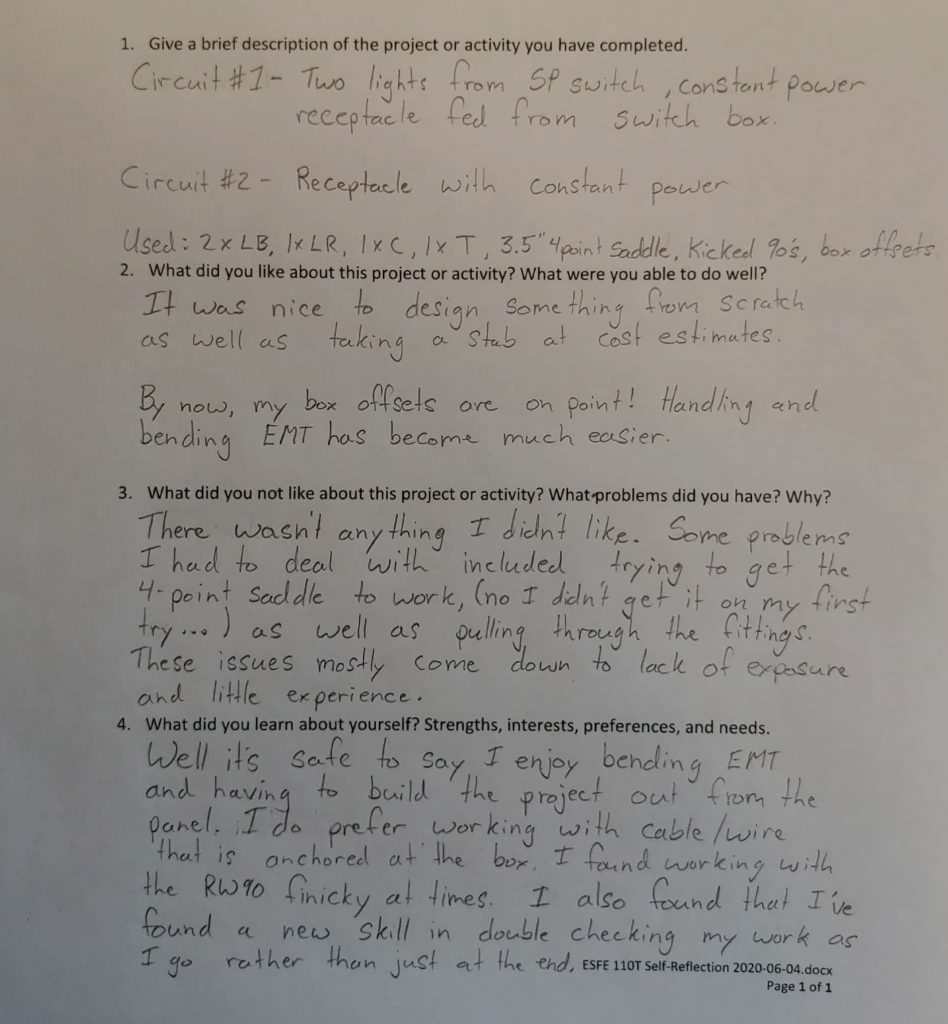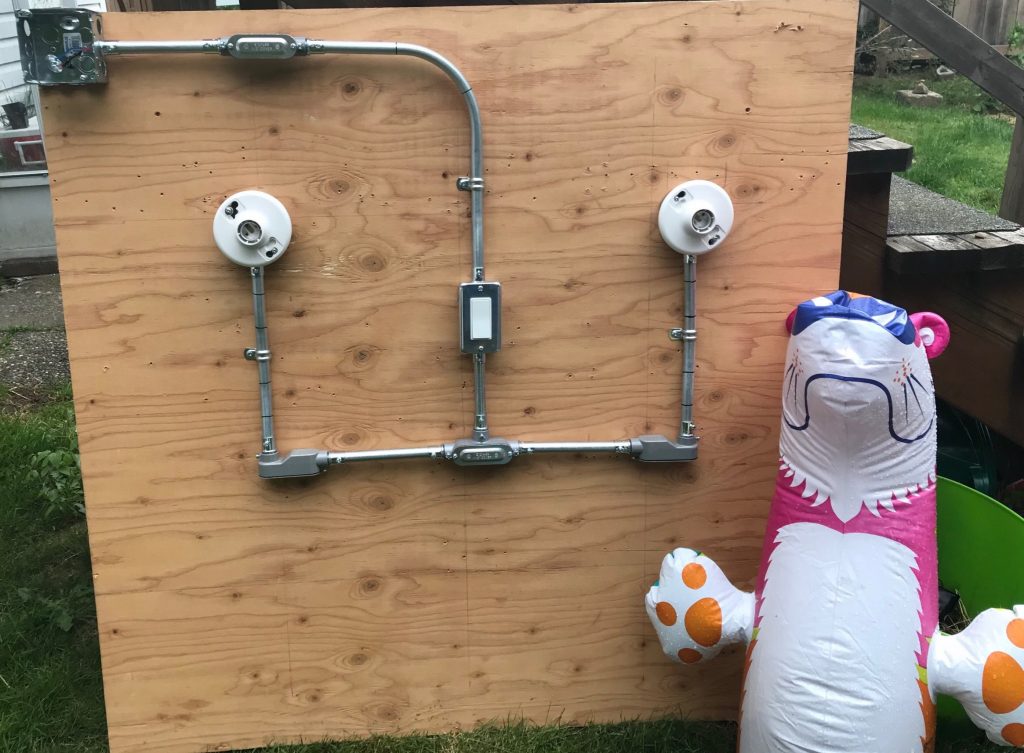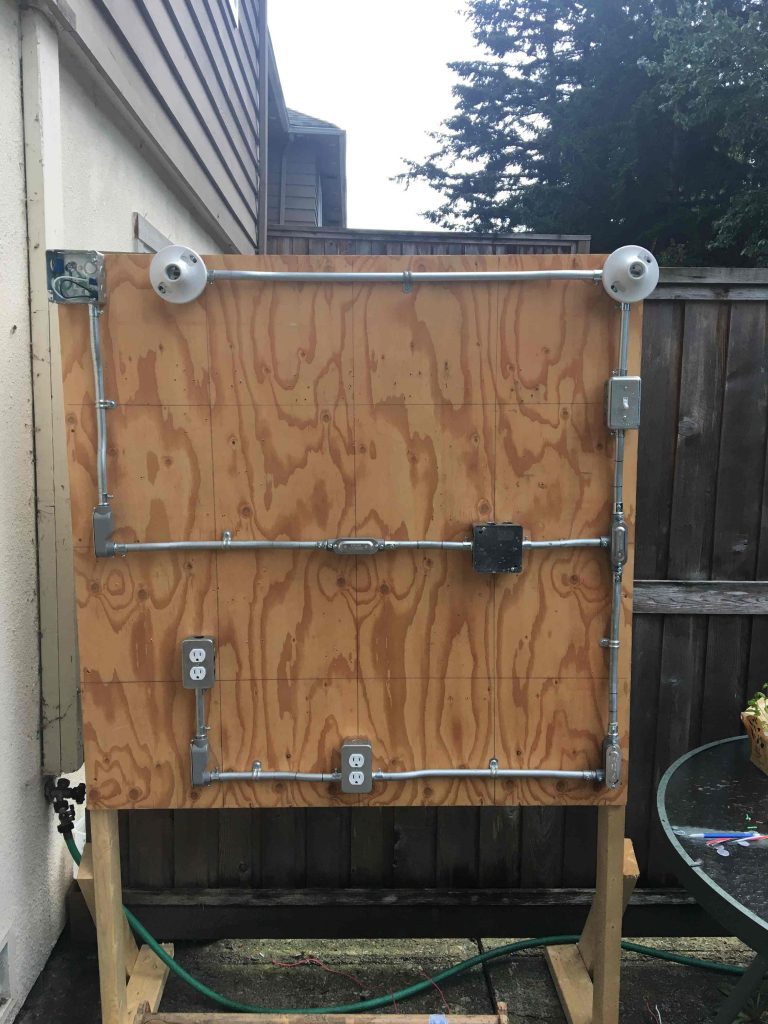Transitioning from life in industry to teaching full-time at the post-secondary level is a journey that many of us remember well. It’s a steep learning curve for the best of us, and that’s under normal circumstances.
For Damien Miles, Electrical Instructor at VIU, 2020 has thrown a few extra curve balls into the mix for his first year of teaching. But, have no fear, Damien didn’t let a sudden pivot to online teaching and learning stand in his way, nor in the way of his students’ success.

When I met up with Damien he was entering the final month of teaching a six-month Electrical Foundations program and had an idea to “kill a few birds with one stone” — a capstone, to be precise.
All good ideas are a ‘A little lofty’, right?
This is what I learned from Damien: “As I developed the capstone, I knew that the concept might be a little bit lofty, and I wasn’t sure how the students would respond to it. But this is the beauty of teaching adults – they were excited and, based on the results, they clearly put a lot of effort into it!
The beauty of teaching adults
Let me start by giving you some of the backstory. In an effort to keep students off campus during the initial Covid pandemic, we’d put together student kits containing some tools, various lengths of wire, conduit, switches, receptacles, and boxes, etc. This provided students with opportunities to work on commercial electrical labs at home and to have their hands on the electrical tools and materials while off campus.
As the students approached their final few labs, I realized that a couple of Essential Skills worksheets still needed to be completed. These are part of the Electrical 110T – Business Operations curriculum, where students need to reflect on a project and consider basics around project planning and estimating.
What better way to complete these final components than to tie them all together!
Aha! A Capstone
As an instructor, I am constantly using the challenges I faced in the workforce as grounds for case-studies in the classroom. For example, as an electrician in the field we often need to toss out the original plans and get creative to really make things work. So, in building this capstone I did exactly that. I asked the students to toss out the assigned wiring diagram, and get creative. I set parameters for the projects and as long as the circuit or circuits were wired to work, and that students included a certain few items, then it was fair game.
What began to enter my inbox was exciting to me as a new instructor!
What began to enter my inbox was exciting to me as a new instructor. To see students step away from the blueprints and think freely to create their own designs was incredible! In the end, this project allowed students to think on their own, execute the technical skills that they have been learning throughout the course, while also seeing the need for soft skills such as organization, planning, communication, and perseverance.” Damien Miles
It was a pleasure to connect with Damien. His passion for teaching, learning, and creativity are inspiring. He is definitely on my list of top 10 new instructors to watch and check-in with over the coming year.
For those of your interested in the details and the results of this capstone project, Damien has shared the details below, along with two student submissions (with permission). If you have questions for Damien, please contact him at damien.miles@viu.ca
Steps of the Capstone
As a final ‘Capstone’ project, students were given these steps:
Step 1 – Plan it
Step 2 – Estimate the time to complete
Step 3 – Begin the build
Step 4 – Pull wire
Step 5 – Splice wires
Step 6 – Install all fixtures and devices
Step 7 – Create a materials list
Step 8 – Complete the self-assessment
Step 9 – Take pics and submit!







Leave a Reply